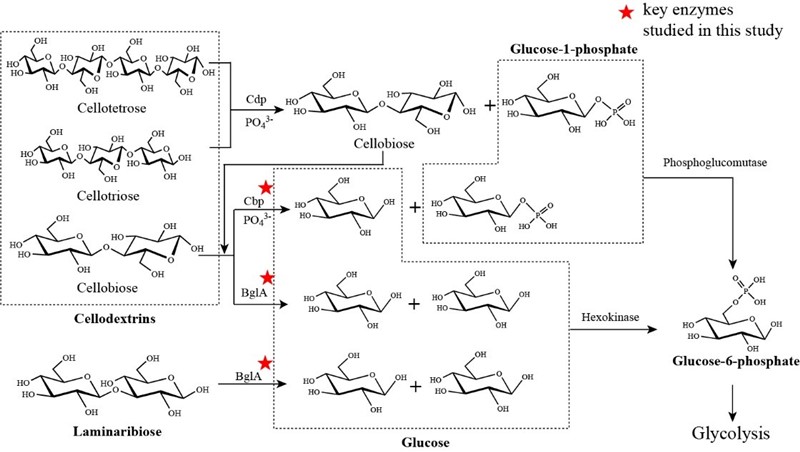Agricultural and forestry waste biomass is a renewable lignocellulosic resource. The cellulosome-producing strain Clostridium thermocellum (C. thermocellum), an efficient cellulose-degrading bacterium,is promising in lignocellulose biorefinery.
Recently, researchers from the Qingdao Institute of Bioenergy and Bioprocess Technology (QIBEBT) of the Chinese Academy of Sciences (CAS) revealed the significant role of β-glucosidase (BglA) in the metabolism of cellobiose and laminaribiose in C. thermocellum.
The results were published in International Journal of Biological Macromolecules on Aug. 7.
Previous studies suggested that C. thermocellum primarily converts oligosaccharides into glucose and glucose-1-phosphate through the phosphorolytic pathway, which then enters the glycolytic pathway for assimilation. The BglA-based hydrolytic pathway remains not fully elucidated.
Based on enzymatic activity analysis, gene knockout, and transcriptomic analyses, the researchers determined the key role of BglA in the metabolism of both β-1,4-glycosidic bond containing cellodextrins and β-1,3-glycosidic bond containing laminaribiose.With laminaribiose as substrate, the activity of BglA was 24 times higher than that on cellobiose.
Furthermore, they determined the structural basis for specific hydrolysis by crystal structure determination and molecular docking analysis. They also revealed the specific cross-regulation of the hydrolytic pathway mediated by BglA and the phosphorolytic pathway mediated by phosphorolytic enzymes in C. thermocellum.

Metabolic pathways of β-1,4-glycosidic bond containing cellodextrins and β-1,3-glycosidic bond containing laminaribiose in C. thermocellum. (Image by XIAO Yan)
(Text by LIU Yajun)